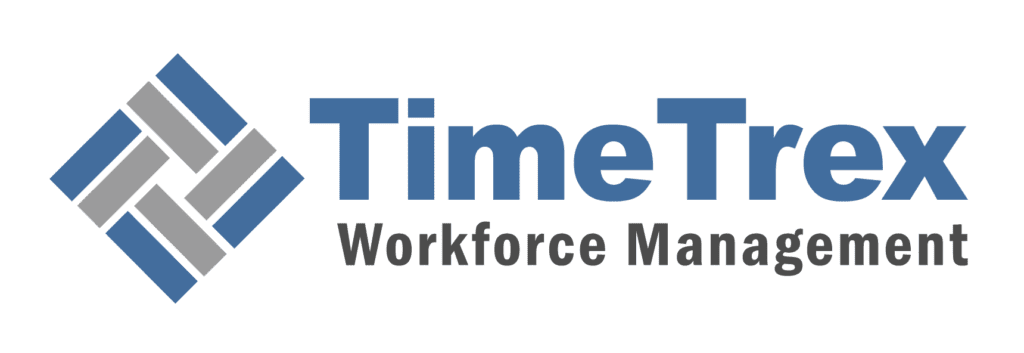
The US's New 50% Brazil Tariff
The new US 50% tariff on Brazil is set to cause significant economic disruption for American consumers and businesses. This article explores the details of the Brazil tariff, its political motivations, the expected economic fallout from the US-Brazil trade war, and the impact on key sectors. Understanding the 50% tariff on Brazilian imports is crucial for any US citizen concerned about rising prices and supply chain stability. This US trade policy shift represents a major development in international relations and the global economy.
Article Index
- TL:DR
- Anatomy of a Trade Shock: The U.S. 50% Tariff on Brazil
- Deconstructing the Rationale: Politics, Pretext, and Personal Animus
- Brazil's Response: Sovereignty, Reciprocity, and Retaliation
- Economic Impact Analysis: A Bilateral Shockwave
- The Geopolitical Chessboard: Realignments and Risks
- The Legal and Institutional Battleground
- Strategic Outlook: Scenarios, Risks, and Recommendations
- Calculate Your Tariff Impact
TL:DR
On July 9, 2025, the U.S. announced a punitive 50% tariff on all Brazilian imports, effective August 1, 2025. This move is not about economics—the U.S. has a $7.4 billion trade surplus with Brazil—but is a political power play. The stated reasons are to pressure Brazil over the criminal trial of former President Jair Bolsonaro and to challenge Brazil's regulation of U.S. social media companies. Brazil has responded defiantly, armed with a new "Economic Reciprocity Law" that allows for matching 50% tariffs and other retaliatory measures. This sets the stage for a full-blown US-Brazil trade war that will hurt both economies. For Americans, this means significant price hikes on everyday goods like coffee, orange juice, and beef, and major disruptions for industries relying on Brazilian oil and steel. Geopolitically, this aggressive action could push Brazil closer to China and the EU, weakening long-term U.S. influence in the Americas.
Anatomy of a Trade Shock: The U.S. 50% Tariff on Brazil
The announcement of a 50% tariff on Brazilian imports did not occur in a vacuum. It represents the sharpest edge of a broader, aggressive U.S. trade policy doctrine implemented in 2025. Understanding the specific architecture of the tariff and its place within this wider context is essential to grasping the full scope of the challenge facing the U.S.-Brazil relationship. The action is a sophisticated, multi-pronged assault, combining the blunt force of a sweeping tariff with the procedural attack of a formal trade investigation, designed to maximize pressure and create multiple, overlapping fronts of engagement.
Policy Specification: The 50% Mandate
On July 9, 2025, U.S. President Donald Trump declared his administration's plan to levy a 50% ad valorem tariff on "any and all Brazilian products sent into the United States". This announcement, the highest tariff rate assigned to any single country in the 2025 trade offensive, was communicated via a formal letter to Brazilian President Luiz Inácio Lula da Silva, which was then publicly disseminated. The tariff is scheduled to take effect on August 1, 2025. A critical feature of the policy is its cumulative nature. The letter specifies that the 50% duty is "separate from all sectoral tariffs," meaning it stacks on top of existing tariffs, creating a prohibitive barrier for goods like Brazilian steel and aluminum.
Context: The "Reciprocal Tariff" Doctrine of 2025
The action against Brazil is the most severe manifestation of the administration's "reciprocal tariff" doctrine, launched on April 2, 2025. This doctrine abandoned broad multilateral approaches in favor of aggressive, country-by-country tariff settings. Initially, a 10% baseline tariff was applied to imports from most countries, including Brazil. After a 90-day negotiating period, the administration began issuing individualized, and often much higher, tariff rates, with Brazil's 50% rate being a stark outlier.
The Parallel Attack: The Section 301 Investigation
Simultaneously, the U.S. administration directed the U.S. Trade Representative (USTR) to initiate an investigation into Brazil's digital trade policies under Section 301 of the Trade Act of 1974. This investigation targets what the U.S. calls "Brazil's insidious attacks on the Digital Trade activities of American Companies." This dual-track approach combines an immediate tariff threat with a formal, quasi-legal investigation, providing a more durable basis under U.S. law to impose duties and making the policy highly resistant to a simple reversal.
| Measure | Details | Stated Rationale | Effective Date | Legal Basis |
|---|---|---|---|---|
| 50% General Tariff | A 50% ad valorem tariff on "any and all" Brazilian imports, separate from and additional to existing sectoral tariffs. | To create a "Level Playing Field," rectify an allegedly unfair trade relationship, and respond to political and digital trade issues. | August 1, 2025 | International Emergency Economic Powers Act (IEEPA) of 1977. |
| Section 301 Investigation | A formal USTR investigation into Brazil's digital economy regulations and content moderation rules for U.S. social media platforms. | To address "insidious attacks on the Digital Trade activities of American Companies." | Initiated July 9, 2025 | Section 301 of the Trade Act of 1974. |
| Threat of Further Escalation | Explicit warning that any retaliatory tariffs from Brazil will be met with even higher U.S. duties. | To deter retaliation and maintain negotiating leverage. | Ongoing | Presidential authority. |
Deconstructing the Rationale: Politics, Pretext, and Personal Animus
The justifications offered by the U.S. administration for its unprecedented 50% tariff on Brazil crumble under scrutiny, revealing a policy driven not by economic logic but by a potent mix of political interventionism, corporate lobbying, and personal animus. The pretext of economic balance has been openly subordinated to political and personal goals.
The Flawed Economic Premise: A "Reciprocal" Tariff on a Surplus Partner
The foundational economic argument for the tariff is built on a falsehood. The claim of a "very unfair trade relationship" is directly contradicted by the U.S. government's own data. The United States has historically and consistently run a significant trade surplus with Brazil. According to the USTR, in 2024, the U.S. had a goods trade surplus of $7.4 billion with Brazil. Over the last 15 years, the cumulative U.S. trade surplus totals an estimated $410 billion. This exposes the pretextual nature of the economic argument.
The Primary Driver: The Bolsonaro "Witch Hunt"
The most extraordinary feature of the U.S. announcement is its direct intervention in Brazil's domestic judicial system. The letter to President Lula forcefully links the tariff to the criminal trial of former Brazilian President Jair Bolsonaro, describing his prosecution for allegedly plotting a coup as an "international disgrace" and a "Witch Hunt that should end IMMEDIATELY!". This represents an unprecedented use of trade sanctions as a tool of direct political coercion to defend a political ally abroad.
The Secondary Front: Defending Big Tech's "Free Speech"
A secondary justification is the defense of American technology companies. The announcement cites "SECRET and UNLAWFUL Censorship Orders to US Social Media platforms" by Brazil's Supreme Court. This refers to rulings aimed at combating disinformation, which the U.S. frames as attacks on "fundamental Free Speech Rights." This aligns with a U.S. policy of resisting foreign regulation of its tech giants and provides the formal basis for the parallel Section 301 investigation.
| U.S. Justification | Quote from U.S. Letter/Statement | Factual Counterpoint/Context | Relevant Data |
|---|---|---|---|
| Unfair Trade Relationship | The tariff is essential to "have the Level Playing Field we must have with your Country." | The U.S. has a consistent and significant trade surplus with Brazil, invalidating the core economic premise. | U.S. goods trade surplus with Brazil was $7.4 billion in 2024. Cumulative U.S. surplus over 15 years is $410 billion. |
| "Witch Hunt" Against Bolsonaro | "The way that Brazil has treated former President Bolsonaro... is an international disgrace. This trial should not be taking place." | A direct intervention in the sovereign judicial process of Brazil, where Bolsonaro faces charges of plotting a coup. | Action is widely seen by analysts as politically motivated to protect a personal ally. |
| Attacks on "Free Speech" (Digital Trade) | The tariff is due in part to "Brazil's insidious attacks on... the fundamental Free Speech Rights of Americans... by the Brazilian Supreme Court." | Refers to Brazilian Supreme Court rulings holding U.S.-based social media platforms accountable for content moderation under Brazilian law. | Aligns with a broader U.S. policy to resist foreign regulation of its tech giants and is the basis for a concurrent Section 301 investigation. |
Brazil's Response: Sovereignty, Reciprocity, and Retaliation
Faced with an unprecedented economic threat, Brazil's response has been swift, defiant, and strategically calculated. The government has framed the confrontation as a fundamental defense of national sovereignty, backed by a powerful legal instrument for retaliation.
Diplomatic and Political Defiance
President Lula rejected the U.S. demands, declaring that "Brazil is a sovereign nation... and will not accept any form of tutelage." The Brazilian government summoned the U.S. ambassador to protest and threatened to physically return the "offensive" tariff letter.
The "Economic Reciprocity Law": A Loaded Weapon
The cornerstone of Brazil's response is the "Economic Reciprocity Law," proactively signed in April 2025. This law grants the executive broad powers to counter foreign measures that harm the nation's competitiveness. Its key provisions allow the government to impose reciprocal tariffs, suspend trade concessions, and even suspend investments and intellectual property rights, turning threats of retaliation into a credible danger for U.S. economic interests.
The Strategic Calculus: Negotiation vs. Escalation
While armed for a trade war, Brazil's stated preference is diplomacy. However, the central U.S. demand—an end to the Bolsonaro trial—is seen as non-negotiable. This impasse leaves little room for compromise. In parallel, Brazil plans to file a formal complaint against the U.S. tariffs at the World Trade Organization (WTO).
| Retaliatory Power | Description | Potential U.S. Targets/Impact |
|---|---|---|
| Reciprocal Tariffs | Authority to impose matching import duties on goods from the offending country. | A 50% tariff on U.S. exports to Brazil ($49.7 billion in 2024), severely impacting U.S. chemicals, machinery, and agricultural goods. |
| Suspension of Trade Concessions | Ability to revoke preferential trade treatment or other commercial benefits granted to the U.S. | Could disrupt established trade flows in sectors where the U.S. enjoys favorable access to the Brazilian market. |
| Suspension of Investment | Power to halt or place restrictions on new or existing investments from the offending country. | Could target significant U.S. foreign direct investment in Brazil's energy, manufacturing, and service sectors. |
| Suspension of IP Rights | Authority to suspend obligations related to intellectual property, such as patents and copyrights. | A major threat to U.S. technology, pharmaceutical, and entertainment companies. |
Economic Impact Analysis: A Bilateral Shockwave
The implementation of a 50% tariff, and the high probability of Brazilian retaliation, would trigger a severe economic shockwave. The impact is asymmetric: designed to inflict acute pain on Brazil's key export industries, while in the U.S., the damage would manifest as broad-based consumer inflation and supply chain friction.
Impact on the Brazilian Economy: A Major Export Shock
For Brazil, the tariff is a direct assault on its export economy. The U.S. is the primary destination for its higher-value manufactured goods. Key sectors at risk include energy (crude oil), metals (steel and iron), agribusiness (coffee, orange juice, beef), and aerospace (Embraer).
Impact on the U.S. Economy: Supply Chain Pain and Consumer Inflation
The economic consequences will be acutely felt within the United States. The policy effectively functions as a regressive consumption tax, with costs borne by American importers and, ultimately, American households and businesses.
- Consumer Price Inflation: The most immediate impact will be a "Breakfast Tax," with a projected spike in the retail prices of coffee and orange juice. With Brazil supplying roughly 30% of the U.S. coffee market and 60% of its orange juice imports, prices are sure to rise. Rising meat prices are also likely, as imports of cheaper Brazilian beef, which have helped moderate high domestic prices, would be eliminated.
- Industrial Supply Chain Disruption: U.S. industries will face higher costs and shortages. Major oil refineries use Brazilian crude for blending. U.S. steel mills depend on Brazilian semi-finished steel. The entire U.S. orange juice industry, apart from a few Florida producers, is structurally dependent on Brazilian concentrate.
| Sector | Key Products | 2024 Export Value to U.S. | Significance/Vulnerability |
|---|---|---|---|
| Energy | Crude Petroleum Oil | ~$6.0 billion | Brazil's single largest export to the U.S.; critical for U.S. refinery blending operations. |
| Metals | Semi-manufactured Iron/Steel Products, Pig Iron | $4.9 billion | Essential inputs for U.S. steel mills; Brazil is a top supplier of high-value semi-finished steel. |
| Aerospace/Manufacturing | Commercial Jets, Auto Parts | Not specified (Embraer revenue from U.S. is ~60%) | High-value manufactured goods; Embraer is highly dependent on the U.S. market. |
| Agribusiness | Green Coffee | $1.9 billion | Brazil is the top supplier to the U.S. coffee market (~30% share). |
| Agribusiness | Pulp | $1.5 billion | A key industrial input for paper products. |
| Agribusiness | Beef (Fresh) | $885 million | A major source of imported beef, helping to moderate high U.S. domestic prices. |
| Agribusiness | Orange Juice (Concentrate) | $637 million | Brazil dominates the U.S. import market (~60% share), essential for the entire U.S. juice industry. |
The Geopolitical Chessboard: Realignments and Risks
The 50% tariff on Brazil is a significant geopolitical maneuver. It is widely interpreted as a punitive measure against Brazil's leadership within the BRICS bloc and a coercive attempt to force strategic alignment. This strategy risks backfiring, compelling Brazil to accelerate its pivot towards other global powers like the EU and China.
The Legal and Institutional Battleground
The U.S. administration's tariff action rests on a fragile legal foundation. The invoked authority, the International Emergency Economic Powers Act (IEEPA), is based on a declared "emergency" of trade deficits, a claim that is factually incorrect in the case of Brazil, where the U.S. has a surplus. This "legitimacy gap" makes the tariff vulnerable to challenges in U.S. courts and at the World Trade Organization (WTO), where Brazil intends to file a complaint.
Strategic Outlook: Scenarios, Risks, and Recommendations
The conflict creates profound uncertainty. The dispute could lead to de-escalation through negotiation, a full-scale tariff war, or a protracted stalemate. For U.S. businesses, the key risks are supply chain disruption, loss of export markets, and regulatory threats. For consumers, the risk is significant price inflation. Businesses with U.S.-Brazil supply chains should conduct immediate vulnerability assessments, activate contingency sourcing plans, hedge financial risk, and engage in targeted lobbying to advocate for a de-escalation of this damaging US-Brazil trade war.
Is Your Business Ready for the 50% Brazil Tariff?
The new tariffs on Brazilian imports will have a significant impact on supply chains and operational costs. Don't get caught unprepared. Use our comprehensive tariff calculator to understand the financial impact on your business and explore strategies to mitigate the risks.
CALCULATE YOUR TARIFF IMPACT NOWDisclaimer: The content provided on this webpage is for informational purposes only and is not intended to be a substitute for professional advice. While we strive to ensure the accuracy and timeliness of the information presented here, the details may change over time or vary in different jurisdictions. Therefore, we do not guarantee the completeness, reliability, or absolute accuracy of this information. The information on this page should not be used as a basis for making legal, financial, or any other key decisions. We strongly advise consulting with a qualified professional or expert in the relevant field for specific advice, guidance, or services. By using this webpage, you acknowledge that the information is offered “as is” and that we are not liable for any errors, omissions, or inaccuracies in the content, nor for any actions taken based on the information provided. We shall not be held liable for any direct, indirect, incidental, consequential, or punitive damages arising out of your access to, use of, or reliance on any content on this page.
About The Author

Roger Wood
With a Baccalaureate of Science and advanced studies in business, Roger has successfully managed businesses across five continents. His extensive global experience and strategic insights contribute significantly to the success of TimeTrex. His expertise and dedication ensure we deliver top-notch solutions to our clients around the world.
Time To Clock-In
Start your 30-day free trial!
Experience the Ultimate Workforce Solution and Revolutionize Your Business Today
- Eliminate Errors
- Simple & Easy To Use
- Real-time Reporting

Saving businesses time and money through better workforce management since 2003.
Copyright © 2025 TimeTrex. All Rights Reserved.
